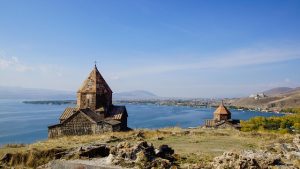Cruise tourism in Seychelles has experienced steady growth, offering both economic opportunities and environmental challenges. However, the sector has long suffered from a lack of reliable data—particularly regarding its local impacts on the Inner Islands and Marine Protected Areas (MPAs). In response, the Seychelles Sustainable Tourism Foundation (SSTF), with funding from the Seychelles Conservation and Climate Adaptation Trust (SeyCCAT), launched a comprehensive assessment in early 2025.
This case study presents the results of the direct economic and specific environmental impact analysis of cruise activities in the Seychelles. It was conducted in collaboration with the Blue Economy Research Institute (BERI) of the University of Seychelles and mascontour.
The study is based on surveys of cruise passengers in the port of Victoria, interviews with relevant stakeholders and validation workshops on Mahé, Praslin and La Digue.
The results provide valuable insights into the spending behavior of passengers, their environmental awareness and the views of local stakeholders on the sustainable design of cruise tourism. They are intended to support the development of the national cruise tourism strategy and serve as a basis for further research, cooperation and initiatives.
The complete results and presentations can be found here.
From data to implementation
1. background and context
Cruise tourism in the Seychelles has increased significantly in recent years. Nevertheless, there are still data gaps that make it difficult to make informed decisions. With financial support from the Seychelles Conservation and Climate Adaptation Trust (SeyCCAT), the Seychelles Sustainable Tourism Foundation (SSTF) has therefore initiated a study to investigate the direct economic and environmental impacts of cruise activities on the Inner Islands and in Marine Protected Areas (MPAs).
2. goals
- Closing critical data gaps in cruise tourism
- Gain an understanding of the spending habits and environmental awareness of cruise passengers
- Gather stakeholder perspectives on challenges and opportunities
- Contributing to the national cruise tourism strategy
3. methodology
Data collection:
Survey of cruise passengers in the port of Victoria (January-April 2025)
- Interviews with stakeholders from different sectors
- Public validation workshops on Mahé, Praslin and La Digue
Partners: SSTF, mascontour, BERI, University of Seychelles
Project management: Diana acted as project manager and represented both SSTF and mascontour.
4 Central results
Economic findings:
- Average expenditure: – USD 116 for organized excursions – USD 63 for individual shore excursions (representative for the cruise season surveyed and taking into account selected quality standards)
- Limited additional expenses for organized excursions
- Interest in more local arts and crafts offerings
Environmental findings:
- High environmental awareness among passengers
- Willingness to pay more for environmental protection
- Smaller ships had a more positive impact overall
Feedback from interest groups:
- Desire for longer stays and promotion of the Seychelles as a port of departure/destination
- There is a need for more varied excursion options to take the pressure off busy places
- Waste management was identified as a priority environmental concern
5 Results and impact
- The data is incorporated into the national cruise tourism strategy
- The results are publicly accessible for further research and cooperation
- The validation workshops promoted inclusive stakeholder participation
6. findings
- The importance of involving various interest groups
- Need for targeted strategies to promote local economic benefits
- Cruise tourism must reconcile growth and sustainability
7 Next steps
- Integration of stakeholder feedback into the final report
- Continuation of cooperation with local stakeholders
- Development of sustainable guidelines and initiatives for cruise tourism in the Seychelles
- Contribution to the forthcoming cruise tourism strategy



